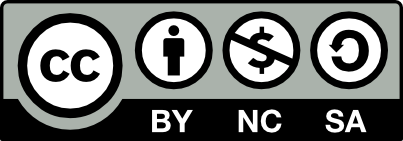Empreu aquest identificador per citar o enllaçar aquest ítem:
http://hdl.handle.net/10609/148183
| Títol: | "Bastón Blanco". Plantillas educativas ara docentes que tienen alumnos con necesidades especiales de atención |
| Autoria: | Carrasco Victoria, Jose Antonio |
| Tutor: | Sangüesa Novellon, Maika |
| Altres: | Gilaberte Redondo, Andreu |
| Resum: | Este trabajo final de grado se centra en la creación de una serie de plantillas online que puedan ser usadas por docentes para estructurar una jornada de trabajo cargando ejercicios en las diferentes asignaturas, orientadas a alumnos con problemas de atención o que necesitan un refuerzo especial, con el fin de que puedan seguir el ritmo del resto de la clase. Generalmente este tipo de refuerzos se realizan a través de dispositivos digitales sobre los que se ejecutan plantillas genéricas (obtenidas o creadas en plataformas online) que, o bien son adaptadas de presentaciones o bien son creadas sin una base de diseño. Por lo tanto, el objetivo se centra en crear un elemento digital atractivo a nivel visual, sólido a nivel experiencia de usuario y que aplique los principios de diseño para que pueda ser versátil y útil para todos los usuarios. Bien sean los propios docentes, bien los propios alumnos. El proyecto se ha basado en la metodología de Design Thinking, poniendo el foco en el prototipado rápido, los test de usuario, buscando el contraste y tomando decisiones de diseño basadas en razones justificadas. La primera fase ha consistido en estudio etnográfico. Este estudio ha permitido definir el público objetivo y tipificarlo de una manera realista, contando con docentes dentro del aula y alumnos. Mediante la realización de una serie de cuestionarios se ha podido determinar qué funcionalidades son los que realmente necesitan los docentes de la propia herramienta. Posteriormente se han desarrollado jornadas con varios educadores para crear prototipos de bajo nivel. A partir de ahí han ido tomando forma las diferentes plantillas, aplicando los conocimientos de diseño adquiridos, desarrollando los elementos gráficos de la propia herramienta. Por último, se han creado una serie de plantillas para las diferentes asignaturas con ejercicios destinados al grupo de control con el fin de poder testear la herramienta digital de manera práctica y obtener un feedback realista sobre la experiencia de usuario y usabilidad. El resultado es una herramienta que ofrece una estética cuidada, es versátil y sencilla de utilizar, accesible y que permite a los docentes generar dinámicas de trabajo personalizadas para aquellos alumnos que requieren de un trato especial. This final degree project focuses on the creation of a series of online templates that can be used by teachers to structure a workday by loading exercises in different subjects, aimed at students with attention problems or who require additional reinforcement, so that they can keep up with the rest of the class. Usually, this type of reinforcement is done through digital devices using generic templates (obtained or created on online platforms) that are either adapted from presentations or created without a design foundation. Therefore, the objective is to create a visually appealing digital element that is solid in terms of user experience and applies design principles so that it can be versatile and useful for all users, whether they are teachers or students themselves. The project has been based on the Design Thinking methodology, focusing on rapid prototyping, user testing, seeking contrast, and making design decisions based on justified reasons. The first phase involved an ethnographic study. This study allowed defining the target audience and characterizing them in a realistic way, involving both teachers and students. By conducting a series of questionnaires, it was possible to determine the functionalities that teachers actually need in the tool. Subsequently, workshops were conducted with several educators to create low-level prototypes. From there, the different templates took shape, applying the acquired design knowledge and developing the graphic elements of the tool itself. Finally, a series of templates for different subjects were created, with exercises intended for the control group in order to test the digital tool practically and obtain realistic feedback on the user experience and usability. The result is a tool that offers a polished aesthetic, is versatile and easy to use, accessible, and allows teachers to generate personalized work dynamics for those students who require special attention. |
| Paraules clau: | enseñanza digital plantillas educativas refuerzo educativo educación online diseño en educación digital education online education educational templates educational reinforcement design in education |
| Tipus de document: | info:eu-repo/semantics/bachelorThesis |
| Data de publicació: | 10-jun-2023 |
| Llicència de publicació: | http://creativecommons.org/licenses/by-nc-sa/3.0/es/  |
| Apareix a les col·leccions: | Trabajos finales de carrera, trabajos de investigación, etc. |
Arxius per aquest ítem:
| Arxiu | Descripció | Mida | Format | |
|---|---|---|---|---|
| jcarrasco77TFG0623memoria.pdf | Memoria del TFG | 33,76 MB | Adobe PDF |  Veure/Obrir |
Comparteix:
 Google Scholar
Google Scholar
 Microsoft Academic
Microsoft Academic
Aquest ítem està subjecte a una llicència de Creative CommonsLlicència Creative Commons


